If you run out of matzo meal in your pantry, there are suitable alternatives that you can use. Matzo meal substitute include almond meal, quinoa flour, matzo bread meal, saltine crackers, and plain bread crumbs.
The first three ingredients are suitable for Passover meal preparation, while the last two – saltine crackers and plain bread crumbs – aren’t.
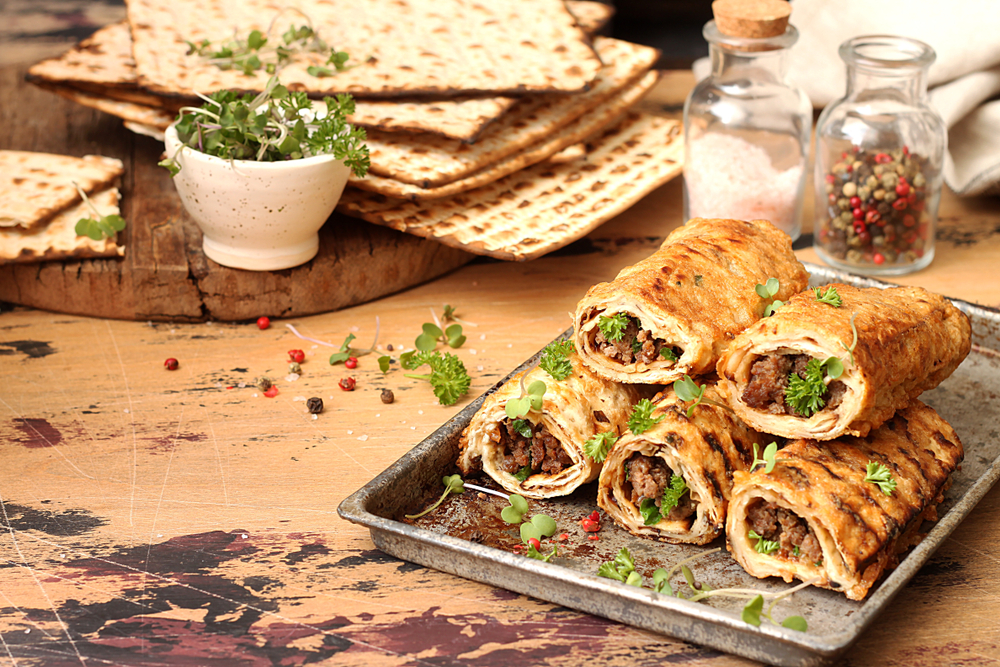
Matzo meal is made from ground matzo crackers and is a handy ingredient in many delicacies, including matzo ball soups, pancakes, and many casseroles. Matzo has been part of the Jewish tradition, dating back over three thousand years to when the Jews broke away from bondage in Egypt and embarked on an exodus to Canaan.
In commemoration of the Passover, the Jews eat matzo, which is unleavened bread made with two ingredients only – water and flour. The bread must be prepared (mixed and baked) within 18 minutes to prevent it from fermenting.
Traditionally, the Jews ate handmade matzo (and some still do) until 1838, when Isaac Singer invented the first dough-rolling machine. This made it possible for mass production and ushered in an era of factory-processing of sacred bread. However, when sourcing matzo meal for the festival, you should ensure you check the box for a ‘Kosher for Passover’ seal as not all matzo is kosher.
That said, let’s now get down to our list of best matzo meal substitutes.
Recommended Matzo Meal Substitute
1. Almond Meal
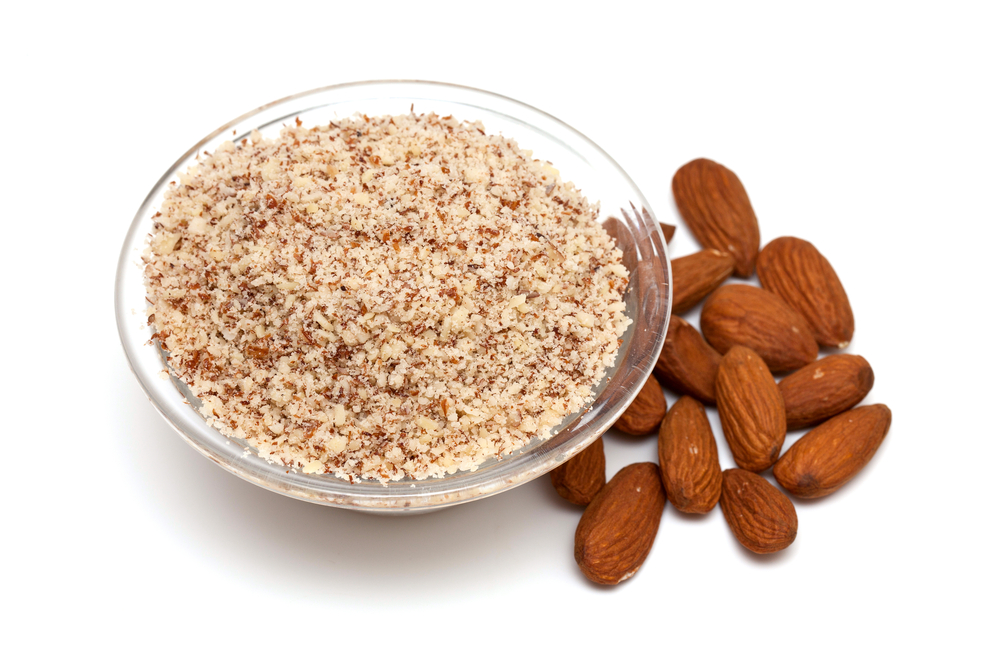
Almond meal is a popular French baking ingredient but can be used to replace matzo meal in various recipes. Almond meal is a kosher ingredient, meaning you can use it when preparing Passover dishes. Moreover, almond meal (flour) has a better taste, especially in baked goods, making it an ideal substitute. However, always allow the baked goods to cool off first before slicing, as they can easily collapse.
Recipes: Chocolate pecan pie, fudgy brownies, and thickening sauces.
2. Matzo Cake Meal
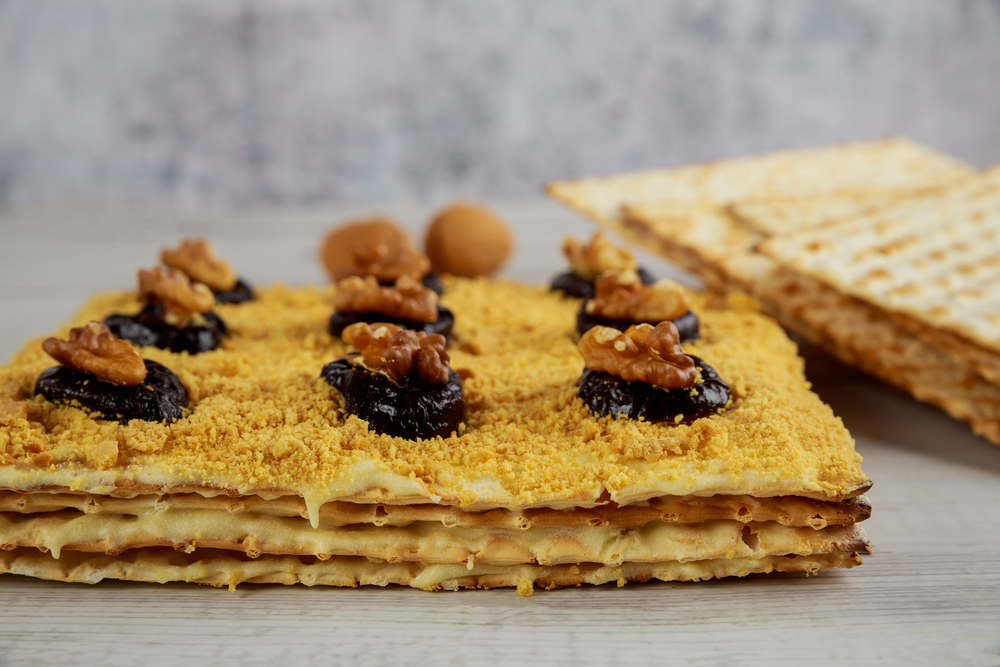
Matzo meal cake is made from the same ingredient as matzo meal – i.e., matzo crackers – only they have a different texture. This ingredient makes an ideal substitution for matzo meal baked goods due to its finer texture. You can also use cake meal to make matzo balls, though the consistency is a little denser than your ordinary matzo meal balls.
Due to the variance in texture, increase the matzo cake meal portion slightly when baking to compensate for volume. To achieve less dense matzo balls, ensure you add beaten egg white to the mixture to make the balls fluffier.
Recipes: Matzo meal balls, soups, Pesach rolls, plus a host of other baked goods.
3. Quinoa Flour
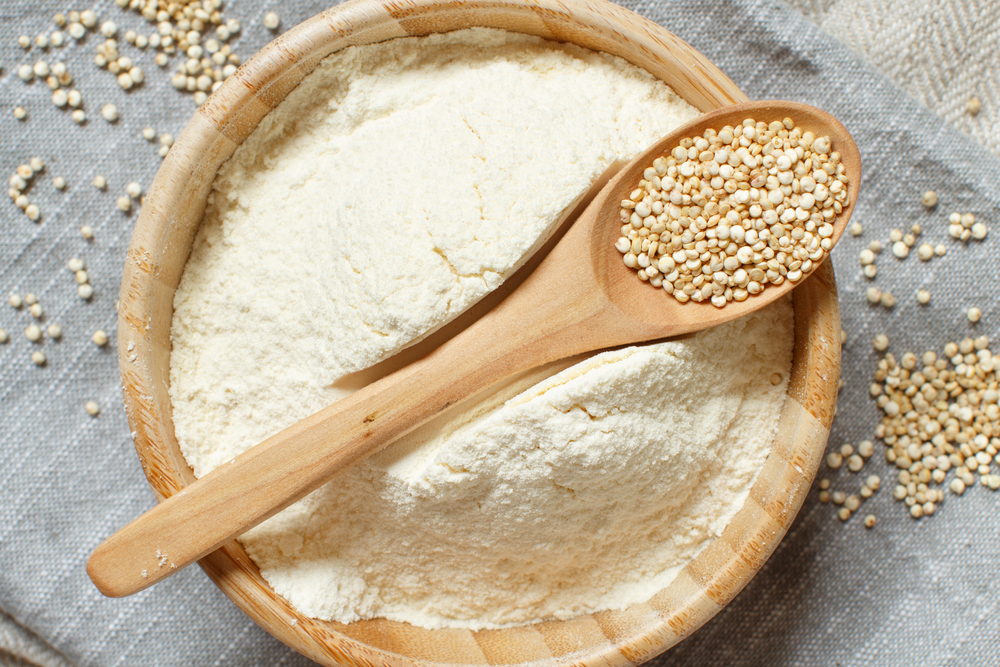
Quinoa flour is another kosher ingredient you can use as a substitute for matzo meal. Doubling as a gluten-free ingredient, you can use quinoa flour as a replacement in your ordinary matzo meal recipes.
Though the two ingredients have similar amounts of protein, quinoa has more fat and fiber, which makes you feel fuller. Quinoa also has a nutty and slightly bitter taste, which suits savory baked goods. Again, when you bake using quinoa, you should allow the goodies to cool off before cutting to avoid creating a crumbled mess.
Recipes: Quinoa matzo balls, chocolate chip cookies, chocolate cake, pancakes.
4. Plain Bread Crumbs
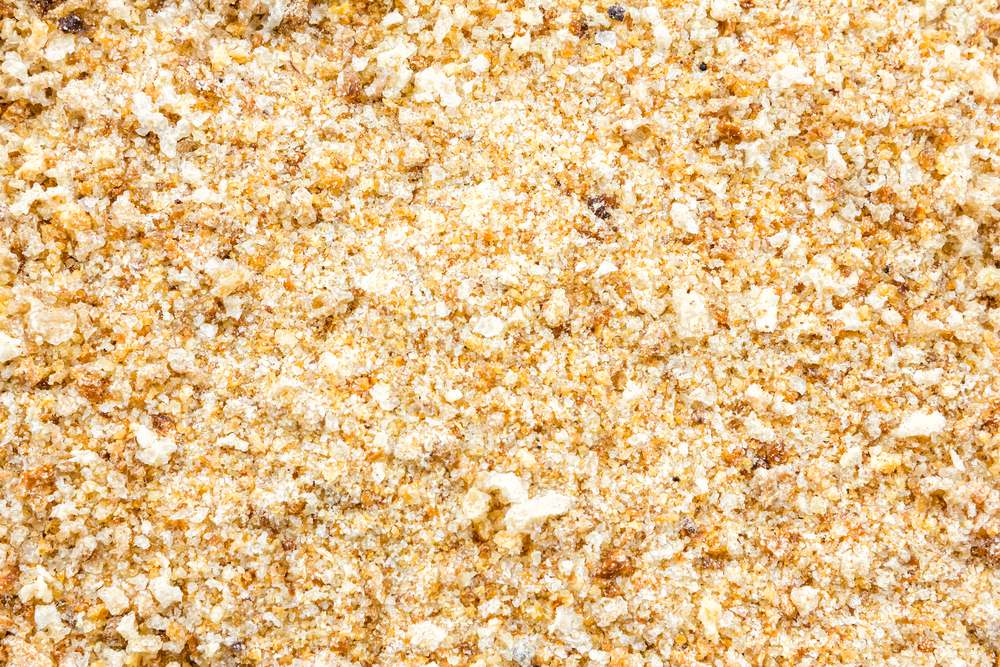
Running out of matzo meal does not have to keep you from making your favorite matzo delicacies. If you have plain bread crumbs, they make an ideal substitution for matzo meal. The only downside is that the common bread contains yeast, making it unsuitable for Passover festival meals. However, you can look for kosher bread, which doesn’t have yeast, and use it to spice up your Passover matzo meal recipes.
Note that breadcrumbs are usually more moist than matzo meal, so factor that in when mixing ingredients. Alternatively, you can go for stale bread as it is drier.
Recipes: Matzo balls, meatloaf.
5. Saltine Crackers
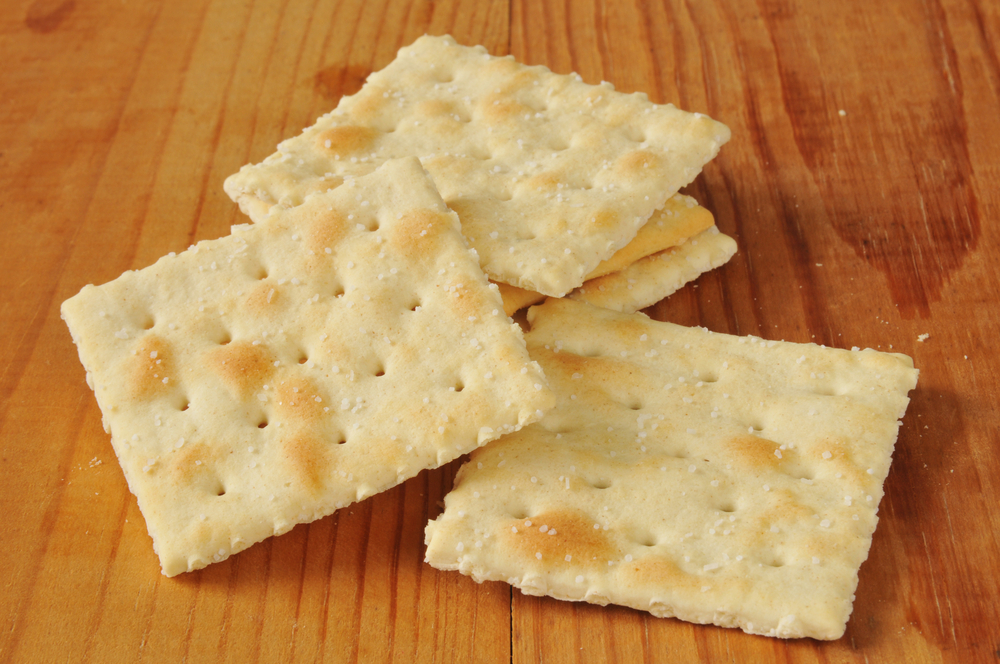
Also known as soda crackers, saltine crackers make an ideal matzo meal replacement for non-Passover meals. To get them ready, you can use a blender or a food processor to whip them into your preferred texture.
Some crackers are salted, so ensure you only use the unsalted ones to achieve the same bland taste as matzo meal.
Recipes: Matzo balls, meatloaf, matzo ball soups.
Frequently Asked Questions
Not really. Matzo meal is different from ordinary flour in that it’s toasted, which gives it a distinct taste suited to the specific recipes. It also has a different texture than flour (which is finer), making it ideal for delicacies requiring a fluffier consistency.
For these reasons, using flour as a replacement for matzo meal cannot get you the same results. The only exceptions are flours such as quinoa and almond, and that’s because they too aren’t as refined as ordinary wheat flour.
One similarity between cornmeal and matzo meal is that they have close textures. However, that’s as far as the similarities go. Cornmeal is made from corn, while matzo meal mainly comes from wheat flour.
This gives the two distinctive tastes that would affect the outcome of a recipe. Again, matzo meal is made from already toasted matzo bread/crackers, making it ready for consumption, unlike cornmeal which is in uncooked form.
Matzo cake meal and matzo meal come from the same ingredient – matzo bread/crackers – but they are widely different in terms of texture. Matzo meal is roughly ground matzo, while matzo cake meal is finely ground. The latter is closer to flour in texture hence ideal for baked goods, while the former is ideal for fluffy matzo balls.
Nonetheless, you can use matzo cake meal as a replacement for matzo meal. If you need matzo cake meal for a recipe but only have matzo meal, you can ground it to make your own matzo cake meal.
People often fear that matzo ball soups contain too many calories. On the contrary, the delicacy has immense health benefits. One cup of matzo ball soup contains 118 calories, constituting only 6% of the daily caloric needs.
Like many broths, the soup has anti-inflammatory properties which enhance immunity. Besides, studies have shown that it helps lower blood pressure. This is in addition to the energy provided by the matzo balls that fuel the body.
Yes. Whether you’re looking for a way to preserve leftovers from Passover, or you just want to store them away, you can freeze them for up to three months with no flavor or texture loss. However, ensure you double freeze them and keep them airtight for best results.
When freezing, put them on a tray apart from each other so they can freeze separately. Once they are frozen, you can bag or pack them in a sealable container, then refreeze them again.
How long the matzo balls last depends on various factors. For example, if left inside the soup, they might not spoil, but they can disintegrate. Essentially, you can leave them unrefrigerated for two hours. If you preserve them in the fridge, they can last for 2-3 days and up to three months in the freezer.
Flours from wheat, rye, barley, oats, and spelt are forbidden for Passover as they tend to ferment and rise. Nonetheless, wheat is the choice ingredient for making matzo bread that’s kosher for Passover, but the process is closely monitored. Once harvested, the grain must not come into contact with water to prevent fermenting.
Effectively, during preparation, the bread must be ready within 18 minutes, i.e., from the point the wheat flour is mixed with water until it’s fully baked.
In other words, any of the prohibited flours can be kosher for Passover as long as they do not ferment. In addition, there are alternative flours that are now allowed to be used during the festival. These include almond flour, quinoa flour, coconut flour, etc.
Conclusion
Matzo meal has pretty close substitutes that you can go to whenever you run out of the ingredient, or you need to spice up your ordinary matzo meal recipes. Almond meal, matzo cake meal, and quinoa flour are the closest kosher for Passover ingredients that can fit most matzo meal recipes, while plain bread crumbs and saltine crackers make excellent non-Passover options.
There are other substitutes out there, but you can never go wrong with those five. While traditionally a Passover preserve, Matzo meal has now become a staple in Jewish and non-Jewish kitchens all year round.
We hope this list will help bring a little diversity to your recipes and grant you the freedom to explore outside your accustomed matzo meal ingredient. However, whenever it’s time for the sacred festival, always remember to use ‘Kosher for Passover’ products only.

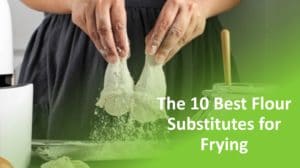
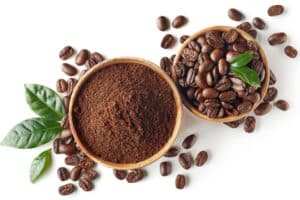
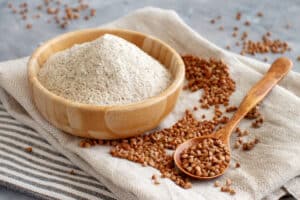
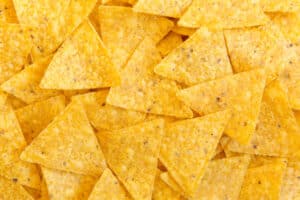
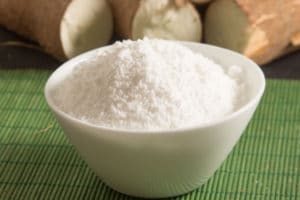
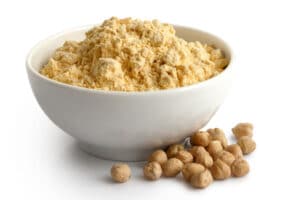
Can I use farina in place of matzo meal?
Hi William, great question. Farina is a good Kosher choice and especially for matzo balls, I think it would work well. Probably not the best for overall matzo meal purposes, due to texture, but for matzo balls it is likely a good choice.
Hi! I have a recipe for vegetable latkes that calls for 1/4 cup of matzo meal. Would quinoa flour or besan (chickpea) flour work in those?
Hi Jane, I think both would work fine. The main thing is they’ll both probably give somewhat of a nutty taste to the latkes. It’ll depend on your overall recipe and I think it may turn out really good and provide a nice balanced taste. Let us know how you like them!